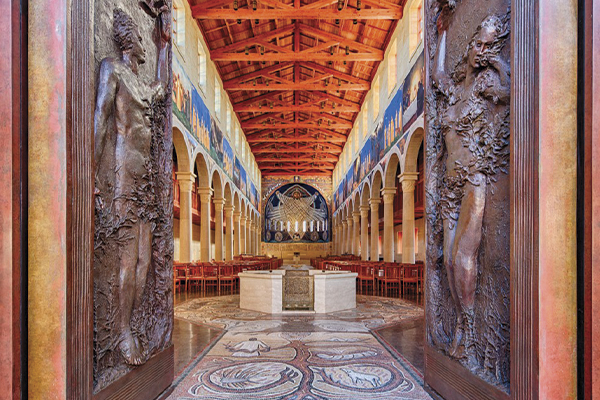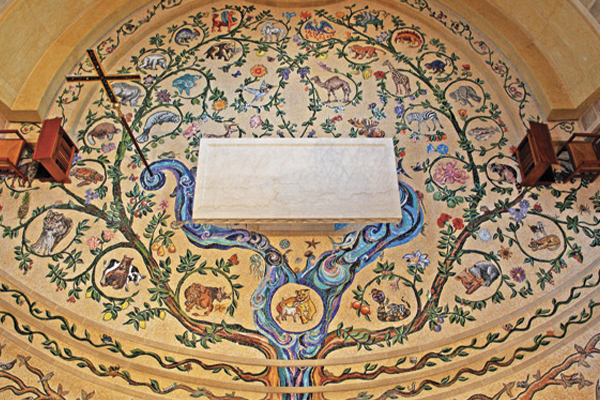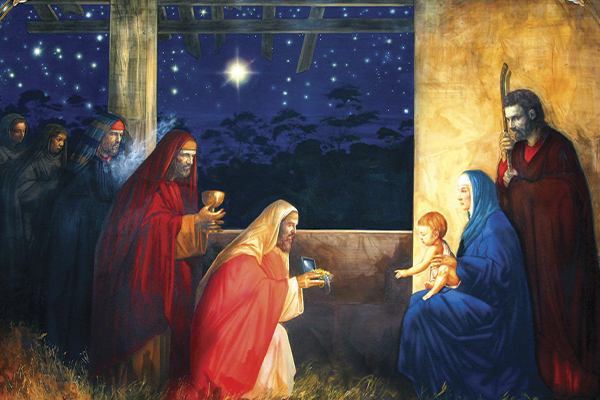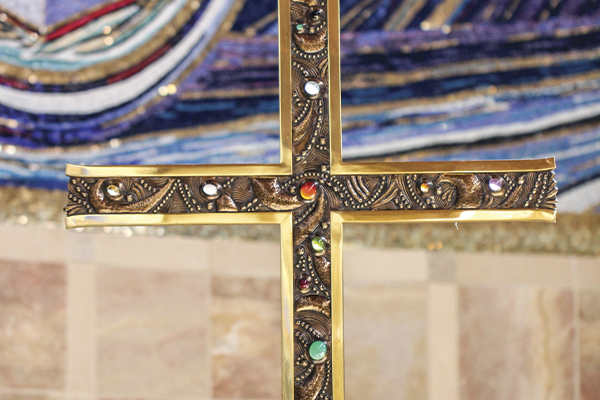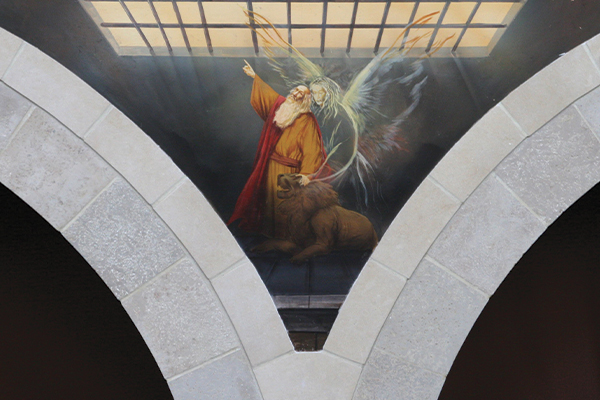Liturgical Art
GUIDING PRINCIPLES
The Liturgical Committee identified a number of principles that directed decision making regarding the overall iconographic program for the church. They determined that the building and its art should tell the story of salvation as outlined in Scripture from Genesis to Revelation. In addition, the art would be part of the physical structure of the church, which meant that it needed to be factored into the architectural plans and drawings. Because the church style drew upon an ancient architectural heritage, ancient art forms such as mosaic, fresco, and sculpture – all employing natural materials – would be used. Thus, the images would become the actual walls, floor, and door of the church.
Faithful adherence to scriptural authenticity was given priority. The art had to support the activities of worship, helping draw the viewer into a deeper relationship with Christ and the holy life. The image program would strengthen the faith of the assembly by enabling them to recall the mysteries of salvation history and portraying life as a pilgrimage from entrance to altar, from baptism to Eucharist. Symbols and images specific to Cape Cod environment would give the church a distinctly native character and remind viewers that the redemptive power of Jesus is here and now.
THE ARTISTS
The Church of the Transfiguration bears the imprint of artists whose experience and skills are imprinted on the vision they helped translate into reality. From design concept to completed installations, the artists worked closely with the Liturgy Committee, forging a creative convergence respecting both the artist and the plan.
The artists had to understand the spiritual implications and dimensions of the images they were depicting, both as instruments of teaching and as expressions of the Community’s faith and life. They had to know the canons of liturgical art and know what was needed for liturgy and congregational participation.
They had to be master artists, creating their art with the most authentic materials and with superb craftsmanship. They had to follow the iconographic program outlined in the master plan, and they had to be willing to teach and train Community members their specialized skills and collaborate with other artists to achieve a richly integrated iconographic program that included stone, bronze, glass, mosaic, and fresco.
More than two dozen members of the Community of Jesus worked alongside the professional artists, studying with the masters and growing in depth and breadth of their artistic understanding and expression. Guilds in the media of fresco, mosaic, stone carving, glass, and organ building were formed to assist with fabrication and collaboration. Community members also collaborated with the professional artists, creating the designs and drawings for some of the art in the church, specifically the column capitals in the church, atrium, and cloister; the exterior lintel; and the design and drawings for the sanctuary floor mosaic, to name a few.
